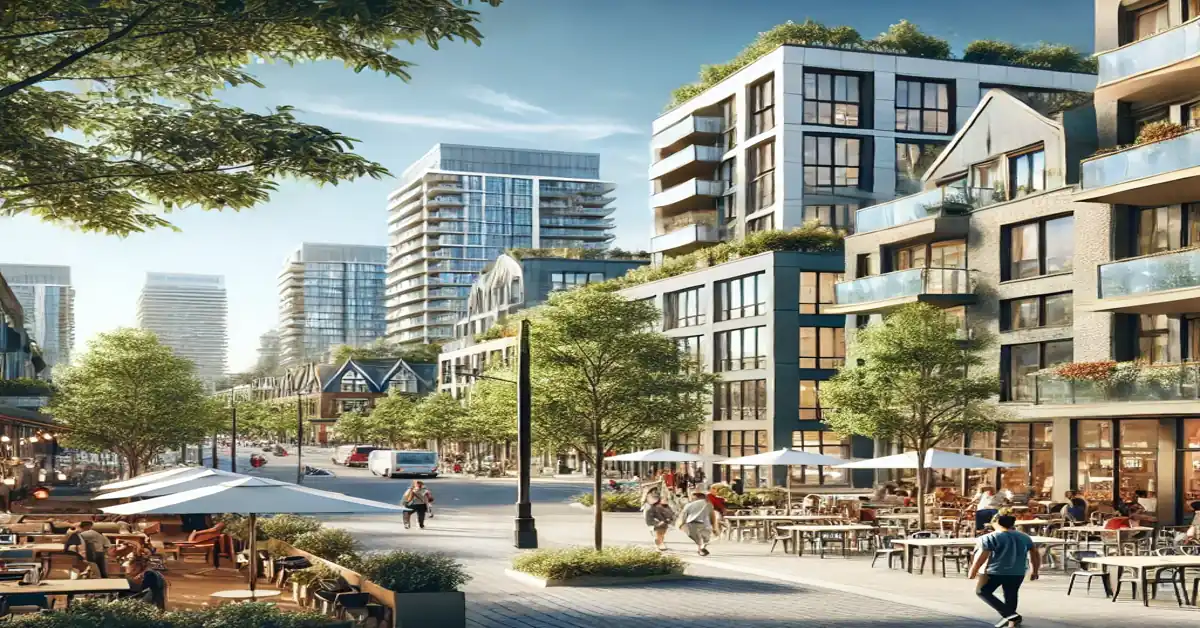Toronto’s real estate market offers an exciting prospect for prospective buyers seeking homes in vibrant communities on the rise. Several neighbourhoods offer a mix of affordability, cultural appeal, and potential for future growth, making them appealing to both residents and investors.
Neighbourhoods Undergoing Gentrification
The process of gentrification is reshaping parts of Toronto, bringing new vitality and altering urban areas. One such area is Gerrard Street East, reminiscent of Leslieville a decade ago. Wedged between the Danforth and Queen Street East, this district boasts affordable detached and semi-detached housing. As new enterprises and eateries sprout, the area amplifies its cultural magnetism, making it an appealing choice for new homeowners.
East Danforth illustrates a similar transformation. Historically affordable, its accessible transit lines and lack of current condo density render it a sought-after locale for future development. Ranking highly in neighbourhood guides, East Danforth maintains a desirable balance between urban connectivity and residential comfort.
Scarborough Village represents another cornerstone of this change. With redevelopment plans for public hubs like the Malvern Town Centre, this neighbourhood anticipates an influx of residents savoring its artistic ambiance. Major changes are in store, driven by these new developments and the corresponding societal shifts.
Neighbourhoods with Upcoming Developments
With the Port Lands area poised for completion of a major project in 2024, Toronto anticipates substantial transformations. This $1.25 billion venture aims to reroute a river mouth and develop a new island, unlocking vast tracts of land for housing. The urban evolution positions the Port Lands as a noteworthy candidate for prospective growth.
Future developments are not limited to new constructions alone. The anticipated launch of the Eglinton Crosstown LRT is set to enhance the Yonge and Eglinton area tremendously. The new transit line, although delayed, promises to enrich the region’s appeal with improved accessibility and fresh development projects, reshaping the neighbourhood’s skyline.
The waterfront zones are witnessing a surge in construction, drawing attention to the East Bayfront and West Don Lands. The strategic amalgamation of modern housing and scenic views of Lake Ontario showcase a blend of urban living and natural allure, confirming Toronto’s varied housing options, which are very much on the rise.
Seeking Affordable Charm Outside the Conventional: Toronto’s Lesser-Known Gems
In the search for cost-effective, lively communities within Toronto, potential homebuyers often discover hidden jewels nestled outside the spotlight of mainstream lists. These areas not only offer reasonable housing options but also imbue a unique sense of place that stands apart from more frequented locales. Consider, for example, the comfort of East Danforth, a neighbourhood that ranks highly in guides yet maintains a perceptible gap from the condo saturation seen in other areas. With its close proximity to transit and green spaces, it becomes more than a residential space but offers a balanced urban lifestyle at a lower cost than its denser counterparts.
Similarly, the activity surrounding Gerrard Street East, where affordable detached and semi-detached homes intertwine with new establishments, paints a picture of economic living without forfeiting cultural depth. As the area grows with fresh business establishments, the affordable houses within each vicinity become increasingly desirable. Highlighted among these opportunities are the cheap homes in Toronto, which underscore an evolving narrative of accessibility in a city teeming with potential.
Beyond these noted districts are less highlighted but equally compelling options like Mimico, known for its upcoming developments that attract those seeking emerging neighbourhoods. This area represents a convergence of community growth and untapped potential in the residential market. Meanwhile, nestled around Vic Park & St. Clair East, the charming enclave teems with possibilities for young families who value community without breaking their budgets. Each of these neighbourhoods not only reflects the promise of affordable housing but also enriches the cityscape with their unique traits and expanding horizons, providing a genuine alternative for those searching for a new place to grow roots in the expanding city of Toronto.
Transit and Infrastructure Impact
The role of transit lines and infrastructure in enhancing neighbourhood appeal cannot be ignored. The introduction of the Eglinton Crosstown LRT is a key driver of change, particularly in the Yonge and Eglinton corridor. These developments offer improved connectivity and accessibility, thereby anchoring future growth.
Similarly, the East Harbour development, including new GO Transit and Ontario Line stations, is redrawing the urban plans for the Riverside neighbourhood. These projects promise to enrich the area, positioning it on the brink of major transformation. As construction solutions address ongoing challenges, optimism surrounds its potential to foster enhanced community and commercial appeal.
Scarborough, notably slower to rebound post the 2008 recession, remains a focus for affordable housing. Its softer growth trajectory now meets renewed attention as transit lines and city projects infuse it with newfound vitality. Gentrification efforts here reflect broader urban changes across Toronto’s peripheral districts.
Economic and Lifestyle Factors
Toronto’s housing market demonstrates resilience through economic ebbs and flows. An essential factor is the city’s strong demand for housing, further intensified by its status as a nexus for finance and culture. Despite fluctuations in interest rates, property prices maintain their buoyancy, indicative of sustained market health.
Variable mortgage rate predictions—a drop to potentially favorable conditions—suggest imminent increases in property values while preserving mortgage payment stability. This anticipated trend enhances the city’s allure for both buyers and investors alike, promoting varied housing opportunities to accommodate changing urban lifestyles.
Neighbourhood liveability remains influenced by vital factors like affordability and accessibility. Areas such as Leaside and East York present balanced living options with a blend of character homes and modern conveniences. As these factors shape resident preferences, Toronto’s urban quarters adjust to accommodate these dynamics, underscoring the city’s multifaceted appeal.









